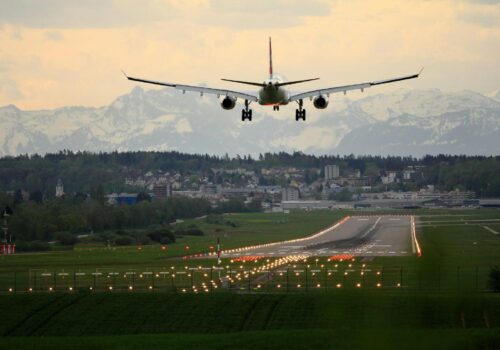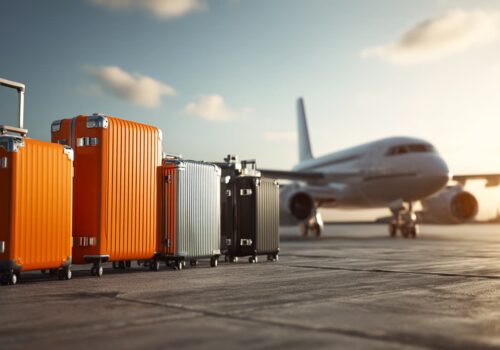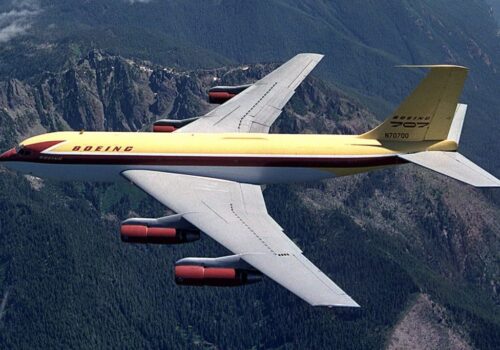Billy Bishop Toronto City Airport
Billy Bishop Toronto City Airport is a regional airport located on the Toronto Islands in Toronto, Ontario, Canada. The airport is often referred to as Toronto Island Airport and was formerly known as Port George VI Island Airport and Downtown Toronto Airport. The airport’s name honors Billy Bishop, a World War I Canadian ace pilot and World War II air marshal. Used by civil aviation, air ambulances and regional airlines using turboprop aircraft. In 2018, it was named the ninth busiest airport in Canada and the sixth busiest Canadian airport serving the United States.
Conceived in the 1930s as Toronto’s main airport, the airport was completed in 1939 by the Port of Toronto Commission (THC). At the same time, THC built Malton Airport as an alternate, but neighboring Malton (today Toronto Pearson International Airport) instead became Toronto’s main passenger airline hub, leaving the island’s airport for general aviation and military purposes. In the 1940s and 1950s, several political leaders proposed expanding the island’s airport to allow for scheduled passenger service and reduce annual operating costs. Malton was sold in 1962 to the Government of Canada in exchange for expanding and improving the island’s airport. After expansion, civilian flights increased to over 200,000 flights per year in the 1960s.Although regional airlines were introduced in the 1970s, the annual number of flights declined and their closure was discussed. In 1983, a 50-year tripartite agreement was signed between the government of Canada and the government of the city of Toronto, and the Harbor Commission, which limited noise and banned the use of aircraft by scheduled airlines, allowed the airport to operate. In the 1990s, in an era of government spending cuts, questions about the future of the airport were raised again due to its yearly deficit. At the same time, redevelopment was taking place north of the airport, and several studies showed that the airport was incompatible with development.
In 1999, the new Port of Toronto Authority (TPA) (renamed “PortsToronto” in 2015) replaced THC. The TPA’s mission was to make the port and airport self-sufficient, and it determined that the airport needed to be expanded to end the annual subsidy. Although the expansion of the airport has been and remains politically controversial, TPA has been working with new regional airline Porter Airlines since 2003 to increase the carrier’s scheduled flights. Under the new financial model, carriers pay landing fees and departing passengers pay airport improvements fees to TPA. Porter was launched in 2006 and passenger volumes grew to the point that by 2010 the airport was self-sufficient. In 2010, Porter opened a new terminal. In 2015, a pedestrian tunnel to the airport was opened after a previous bridge plan was cancelled.In 2013, Porter proposed expanding the airport and changing the operating agreement to allow it to operate Bombardier CS100 jets at the airport. The proposal, which is valued at C$1 billion in government spending, has been sent to PortsToronto for further review. In November 2015, following the 2015 Canadian federal election, the new government announced that it would not reopen the tripartite agreement allowing aircraft. The Ports of Toronto subsequently canceled studies of expansion proposals. The airport can be reached by ferry or via a 260-meter pedestrian tunnel that connects to the mainland.
Description
The airport is located on the Toronto Islands, southwest of downtown Toronto. The airport has one main east–west runway, a shorter runway with a 20-degree deviation, and Billy Bishop Seaplane Base, Toronto City Water Airfield. The airport is used for regional airline and general aviation services, including emergency medical flights (due to its proximity to downtown hospitals), small charter flights, and private aviation. According to the operating agreement, the use of jet aircraft at the airport is prohibited, except for medical evacuation flights. The airport has one passenger terminal built in 2010.
The airport is operated as a division of PortsToronto (formerly the Toronto Port Authority (TPA)), a federal corporation that also operates the Toronto Harbor. The airport is classified as an airport of entry by Nav Canada and is staffed by the Canadian Border Services Agency (CBSA). CBSA officers at the airport can handle aircraft with up to 90 passengers. There is no US border preclearance at the airport, although this has been approved by the Canadian and US governments. Airport operating hours are from 6:45 to 23:00, except for MEDEVAC flights. The airport’s opening hours are governed by a 2003 Tripartite Agreement update that sets out opening hours. Airfield rescue and ambulance services are provided by Billy Bishop Airport Emergency Response with support from the Toronto Fire Department and Toronto Ambulance Service.View from the southwest
The airport can be accessed from a pedestrian tunnel at the foot of the Éireann promenade, which can be used free of charge. From the pavilion on the mainland, a 240 m (800 ft) pedestrian tunnel and a sewer and water tunnel lead to the airport. The pedestrian tunnel has moving sidewalks with elevators at both ends. From the side of the island, visitors are served by an escalator. A consortium known as Forum Infrastructure Partners, made up of Arup, PCL and Technicore, designed, built, financed and maintained the tunnel.
A ferry runs between the same location and the airport every 15 minutes from 5:15 AM to midnight (the 5:15 AM ferry is for airport employees; airline passengers can start crossing at 5:30 AM). A free shuttle runs between York Street and Front Street and the airport. There is a taxi rank at the pier. Short-term and long-term parking is possible at the pier and on the island. There is no roadside parking. The 509 Harbourfront tram line, which connects to the Underground, serves as the intersection of Bathurst Street and Queens Quay, one block north of the ferry pier.
The airport charges an additional fee of $15 per passenger landing on scheduled flights.
Since 2015, Billy Bishop has been participating in the Airports Council International’s Airport Quality Survey customer surveys. In March 2017, the airport was named “North America’s Best Airport” in two categories in the 2016 polls.In 2019, the airport was ranked 124th in the world and worst in Canada by AirHelp, which based its rankings on timeliness, quality of service, food and shopping. Timeliness was only rated 5.8/10 while the airport received 8.1/10 for service and 7.0/10 for food and service.




